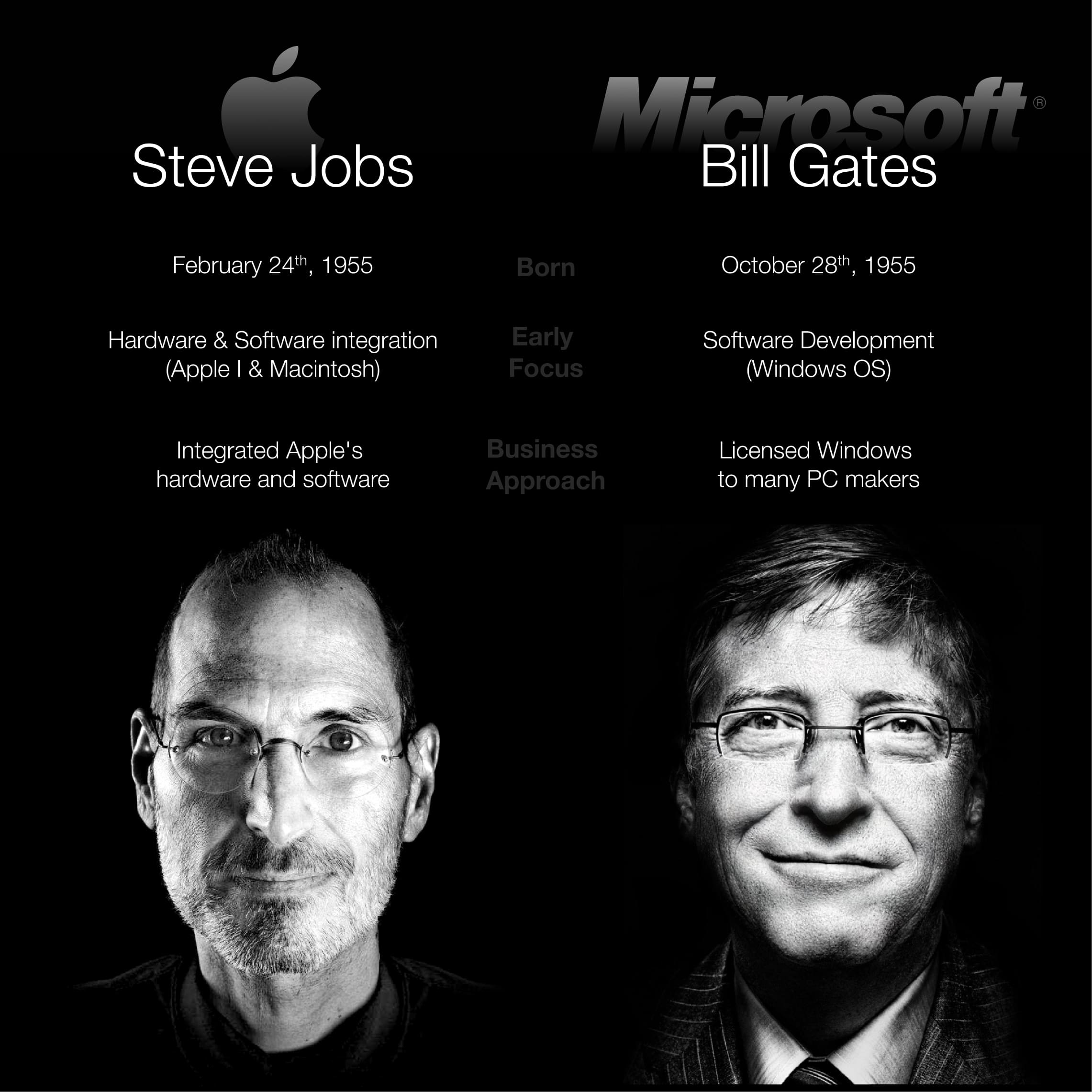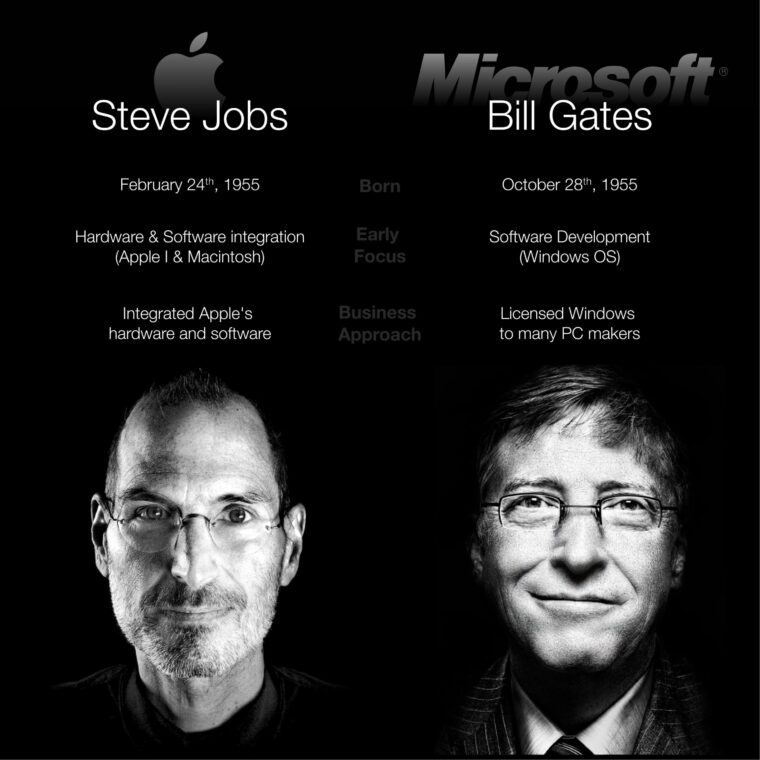In 1975, young Bill Gates dropped out of Harvard to chase a dream that computers could be a common tool in every home and office. Gates, with his sharp mind and keen business acumen, co-founded Microsoft, setting off on a journey to make software that would change the world.
Meanwhile, Steve Jobs, with his impeccable sense of design and profound understanding of what people desire, co-founded Apple. Jobs, a master of innovation and aesthetics, believed that computers should not only be powerful but also intuitive and elegant.
The rivalry between Gates and Jobs wasn’t just about market share; it was a clash of philosophies. Gates, with Microsoft, focused on software, licensing Windows to multiple PC manufacturers and dominating the market with a utilitarian approach. Jobs, on the other hand, insisted on Apple controlling both hardware and software, creating a seamless, integrated user experience.
Yet, this rivalry was also a deep, if complicated, respect. Gates admired Jobs’ knack for design and his ability to create products that people didn’t even know they needed. Jobs, in turn, respected Gates’ ability to build a software empire and his deep understanding of programming.
In 1997, when Apple was on the brink of bankruptcy, it was Gates who helped bail out his rival, recognizing that a world with Apple was better for innovation.
 As time marched on, their legacies continued to evolve. Gates stepped away from Microsoft to focus on philanthropy with the Bill & Melinda Gates Foundation, impacting global health, education, and more. Jobs, until his untimely passing in 2011, continued to push the boundaries of technology and design, leaving behind a legacy of iconic products like the iPhone and iPad.
As time marched on, their legacies continued to evolve. Gates stepped away from Microsoft to focus on philanthropy with the Bill & Melinda Gates Foundation, impacting global health, education, and more. Jobs, until his untimely passing in 2011, continued to push the boundaries of technology and design, leaving behind a legacy of iconic products like the iPhone and iPad.
Their story is a testament to how rivalry can fuel innovation, how differing philosophies can coexist and shape an industry, and how, in the world of technology, there are many paths to changing the world. Bill Gates and Steve Jobs weren’t just rivals; they were architects of the future, each in their own unique way.




